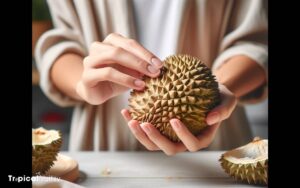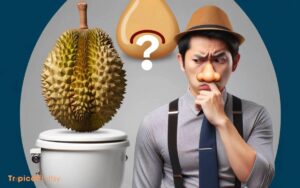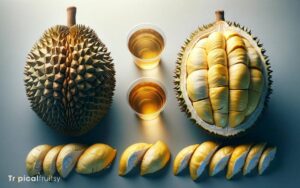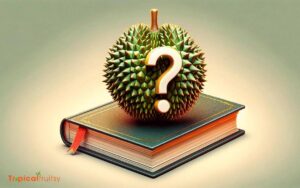What Is Durian Used for? Unlock the Secrets!
Durian is a versatile tropical fruit widely used in culinary creations, nutritional supplements, beauty products, and traditional medicine.
Its strong flavor is featured in various Southeast Asian dishes and confections, and its health benefits are harnessed in skincare and dietary contexts.
Durian’s culinary use is extensive; it’s an ingredient in both sweet and savory recipes. Examples include durian ice cream, cakes, and even curries.
Nutrition-wise, durian is rich in vitamins such as vitamin C, B-vitamins, minerals like potassium, and dietary fiber, making it a healthful addition to diets. Its antioxidants are beneficial for skin health, leading to its inclusion in cosmetic products.
Traditional medicine practices use durian for its purported therapeutic benefits. In agriculture, durian trees support biodiversity, and culturally, the fruit is celebrated in various festivals.
Durian’s multifunctional appeal extends from kitchen tables to skincare routines, highlighting its cultural and health significance.
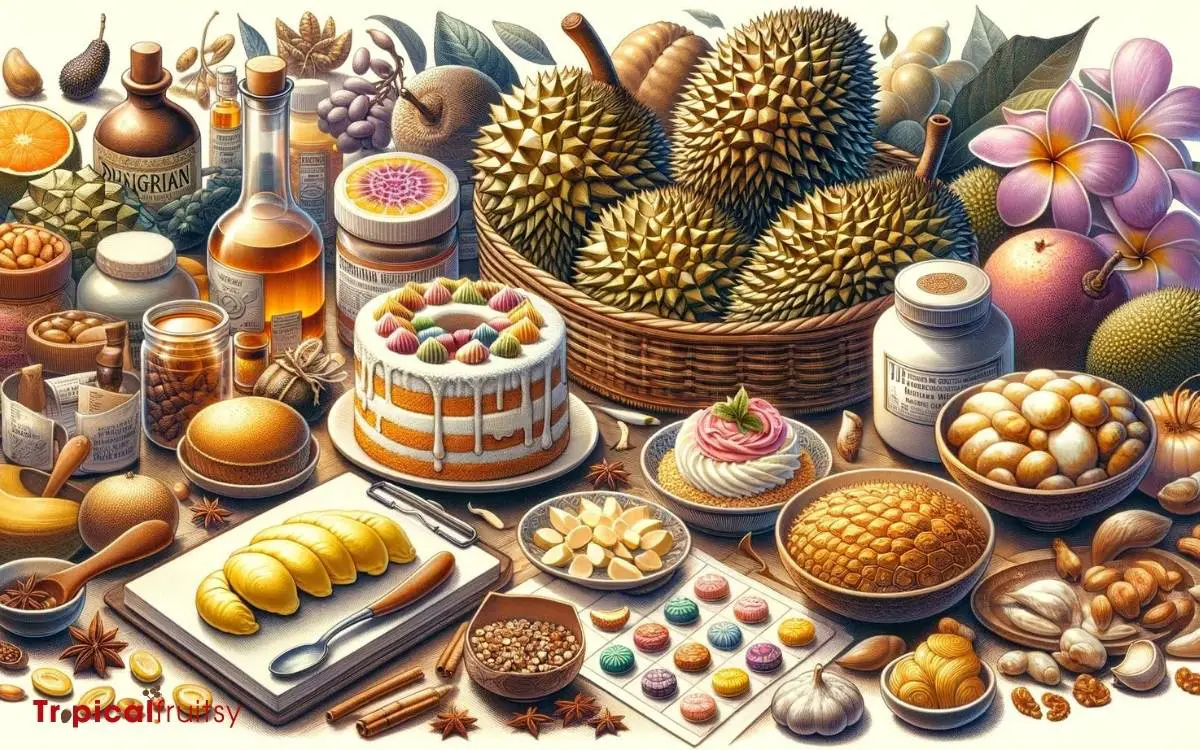
Key Takeaway
Comprehensive Uses of Durian Fruit
| Use Category | Examples | Benefits/Properties |
|---|---|---|
| Culinary (Sweet) | Durian ice cream, cakes | Unique flavor |
| Culinary (Savory) | Durian curries, side dishes | Flavor enhancement |
| Nutrition | Dietary supplements | Vitamins, minerals, fiber |
| Skincare | Creams, facial masks | Antioxidants, anti-aging |
| Medicine | Traditional remedies | Therapeutic potential |
| Agriculture | Biodiversity in ecosystems | Environmental benefits |
| Cultural | Festivals and celebrations | Cultural significance |
Culinary Uses in Southeast Asia
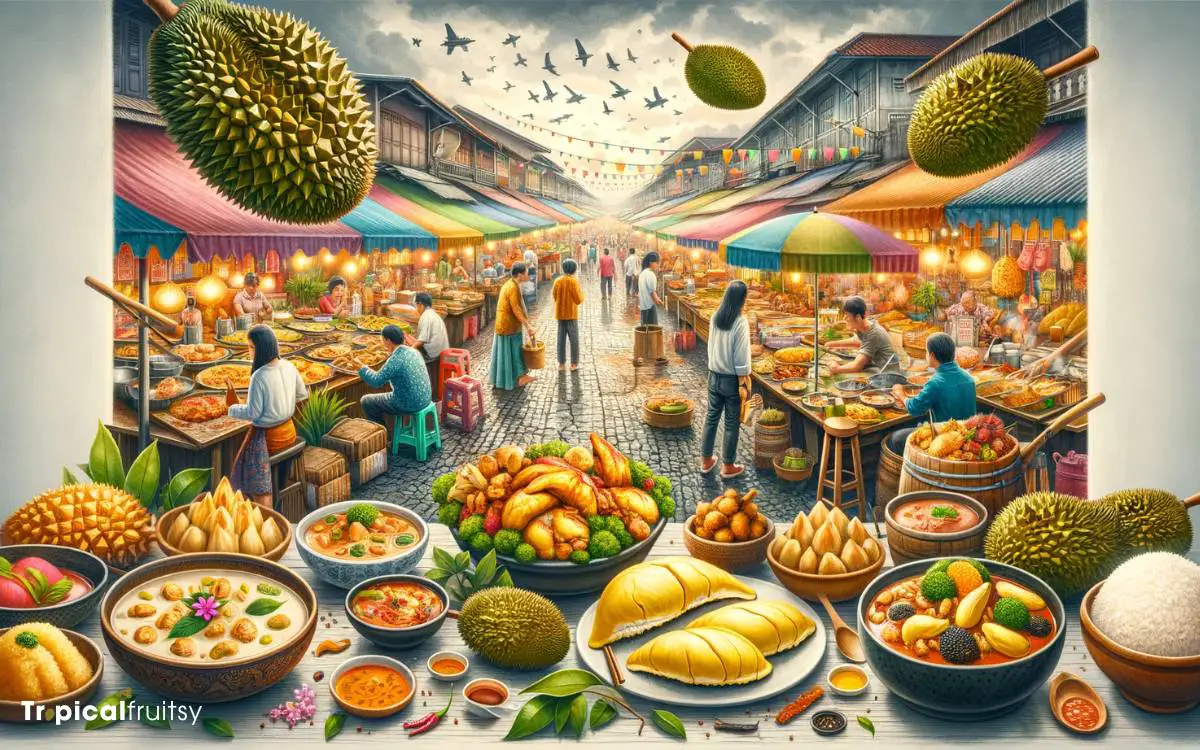
While durian is often regarded as a divisive fruit due to its pungent aroma, it remains a staple ingredient in a variety of Southeast Asian culinary traditions.
The fruit’s complexity is embraced in both savory and sweet applications, exhibiting a rich custard-like texture accompanied by a taste profile that oscillates between sweet and savory notes.
In culinary practices, durian is often incorporated into traditional dishes such as tempoyak, where it is fermented and used as a condiment, and in desserts like serawa durian, where it is cooked with coconut milk and palm sugar.
Its use is highly nuanced, taking into consideration the ripeness and specific variety of the fruit, which greatly influences the final flavor profile of the dish.
The technical intricacies of durian’s use in cuisine pave the way for its adaptation into durian-flavored confections.
Durian-Flavored Confections

Beyond traditional dishes, durian is also a popular flavoring for a range of confections, including candies, chocolates, and pastries.
The utilization of durian in sweet treats is a testament to its versatility and the growing global palate for exotic flavors. These confections often aim to capture the creamy texture and potent aroma that characterize the fresh fruit.
- Durian Candies: These are typically hard-boiled sweets, encapsulating the fruit’s essence in a sugar matrix.
- Durian Chocolates: Artisans infuse durian puree into chocolate ganaches, balancing its robust profile with cocoa’s bitterness.
- Durian Pastries: Incorporating durian flesh into pastry creams or fillings, these delicacies marry the fruit’s flavor with buttery, flaky textures.
Understanding these confections’ composition leads to a segue into the nutritional and health benefits inherent in durian-based treats.
Nutritional and Health Benefits
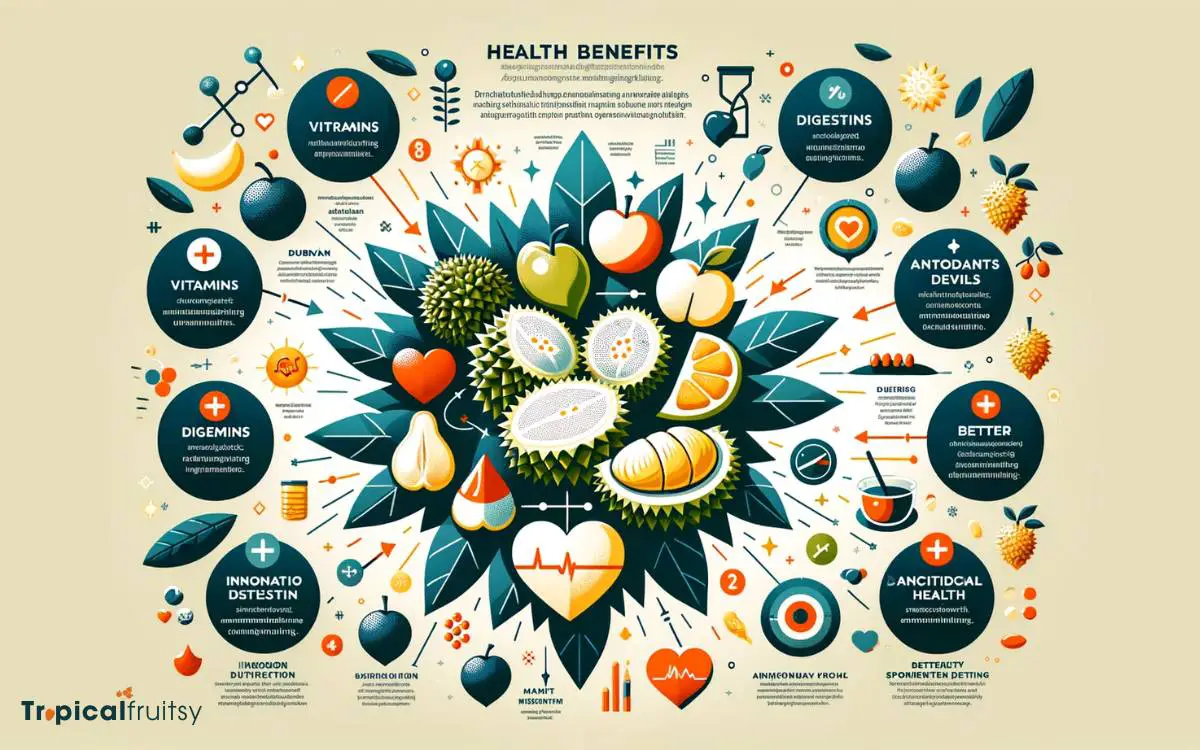
Durian, beyond its unique flavor profile, is a fruit dense in essential nutrients, contributing to its categorization as a functional food.
The fruit’s composition includes a high concentration of vitamins, minerals, and dietary fiber, which are crucial for maintaining various bodily functions and overall well-being.
Furthermore, studies have highlighted the presence of bioactive compounds with antioxidant properties in durian, which may offer protection against oxidative stress and related pathologies.
Rich in Nutrients
Amidst the controversy over its pungent aroma, durian is lauded for its substantial nutritional profile, offering a plethora of vitamins, minerals, and health benefits.
This tropical fruit stands out as a substantial source of essential nutrients that contribute to overall health and wellbeing.
The nutritional composition of durian is noteworthy for its:
- High caloric value, primarily derived from carbohydrates, making it a dense source of energy.
- Richness in dietary fiber, which aids in digestion and may contribute to maintaining healthy cholesterol levels.
- Content of vitamin C, potassium, and B vitamins, including folic acid, which are crucial for various bodily functions, such as immune defense, electrolyte balance, and metabolic processes.
Analyzing durian’s nutritional content reveals its potential as a beneficial component of a balanced diet, notwithstanding its divisive sensory properties.
Antioxidant Properties
In addition to its rich nutritional profile, durian contains powerful antioxidants that play a crucial role in combating oxidative stress and supporting overall health.
These bioactive compounds, including vitamins C and E, polyphenols, and flavonoids, are instrumental in neutralizing free radicals—unstable molecules that can cause cellular damage leading to chronic diseases.
Scientific analysis reveals that durian flesh exhibits significant scavenging activity against these reactive species, thereby mitigating the potential for oxidative-induced pathologies.
The antioxidant capacity of durian has been quantified using assays like FRAP (Ferric Reducing Ability of Plasma) and DPPH (2,2-diphenyl-1-picrylhydrazyl), both of which underscore its potential therapeutic value.
Consuming durian may thus contribute to the fortification of the body’s endogenous defense systems against oxidative stress.
Beauty and Skincare Applications
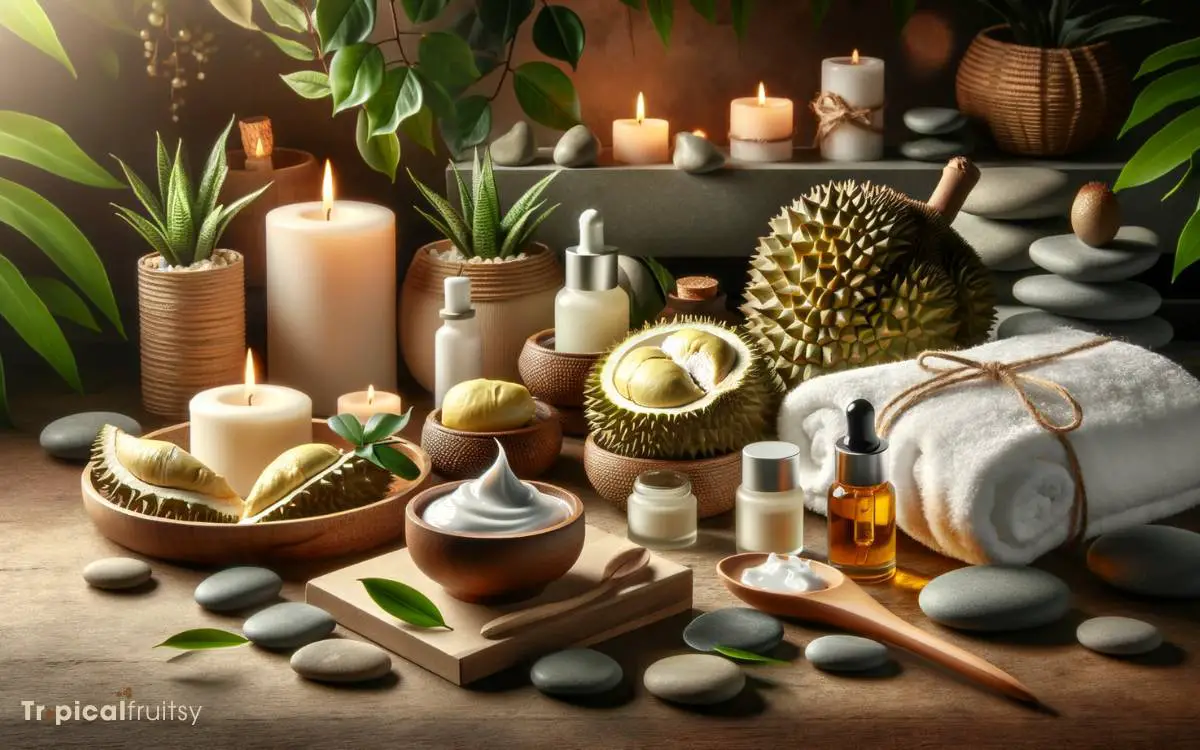
Durian fruit extracts are increasingly incorporated into beauty regimens, notably in the form of facial masks designed to harness the fruit’s rich nutrient profile.
Compounds within durian are studied for their potential anti-aging benefits, targeting the mitigation of oxidative stress on dermal layers.
Additionally, durian is being evaluated as a novel moisturizing agent in creams, leveraging its high vitamin and mineral content to enhance skin hydration and elasticity.
Durian Facial Masks
One may find it surprising that durian, widely known for its pungent aroma, is also harnessed in the creation of nourishing facial masks, capitalizing on its rich composition for skincare benefits.
The fruit’s extract is often integrated into facial mask formulations due to its high content of antioxidants, vitamins, and organic compounds that provide a plethora of dermatological advantages.
Specifically, durian-based facial treatments can:
- Combat oxidative stress with potent antioxidants, such as Vitamin C and polyphenols.
- Provide essential nutrients to promote skin health, including Vitamins A and E.
- Support hydration and collagen synthesis, potentially aiding in skin elasticity and reducing signs of aging.
These masks aim to leverage durian’s biochemical properties to enhance skin texture and radiance, despite the initial olfactory challenge presented by the fruit.
Anti-Aging Properties
While durian facial masks deliver vital hydration and nutrients, they also exhibit anti-aging properties by enhancing the skin’s ability to retain its youthful structure and appearance.
Durian’s high concentration of antioxidants, particularly vitamins C and E, combat oxidative stress and inhibit the activity of free radicals, which are known to precipitate skin aging.
The presence of organic compounds, such as polyphenols, in durian contributes to its ability to modulate enzymatic processes that degrade collagen and elastin fibers.
By preserving these essential proteins, durian assists in maintaining skin elasticity and firmness, mitigating the onset of wrinkles and fine lines.
As researchers continue to investigate the mechanistic pathways of durian’s anti-aging effects, its integration into skincare formulations is becoming increasingly prevalent.
Moisturizing Cream Ingredient
Building on its role as a potent anti-aging agent, durian is now being incorporated into moisturizing creams for its hydrating benefits and nutrient-rich profile.
The fruit’s extract, when added to skincare formulations, confers a plethora of dermatological advantages:
- Hydration: Durian is replete with natural moisturizing properties, which help maintain skin hydration levels.
- Vitamins and Antioxidants: It is a source of vitamins C and E, and contains antioxidants that can protect the skin from oxidative stress.
- Essential Fatty Acids: The presence of fatty acids contributes to the reinforcement of the skin’s lipid barrier, thus enhancing moisture retention.
These attributes make durian an exemplary ingredient for elevated skincare regimes. Its integration within moisturizing creams underscores a trend towards harnessing natural food derivatives for enhanced skin health.
The exploration of durian’s utility in beauty products dovetails into its historical use in traditional medicine practices.
Traditional Medicine Practices
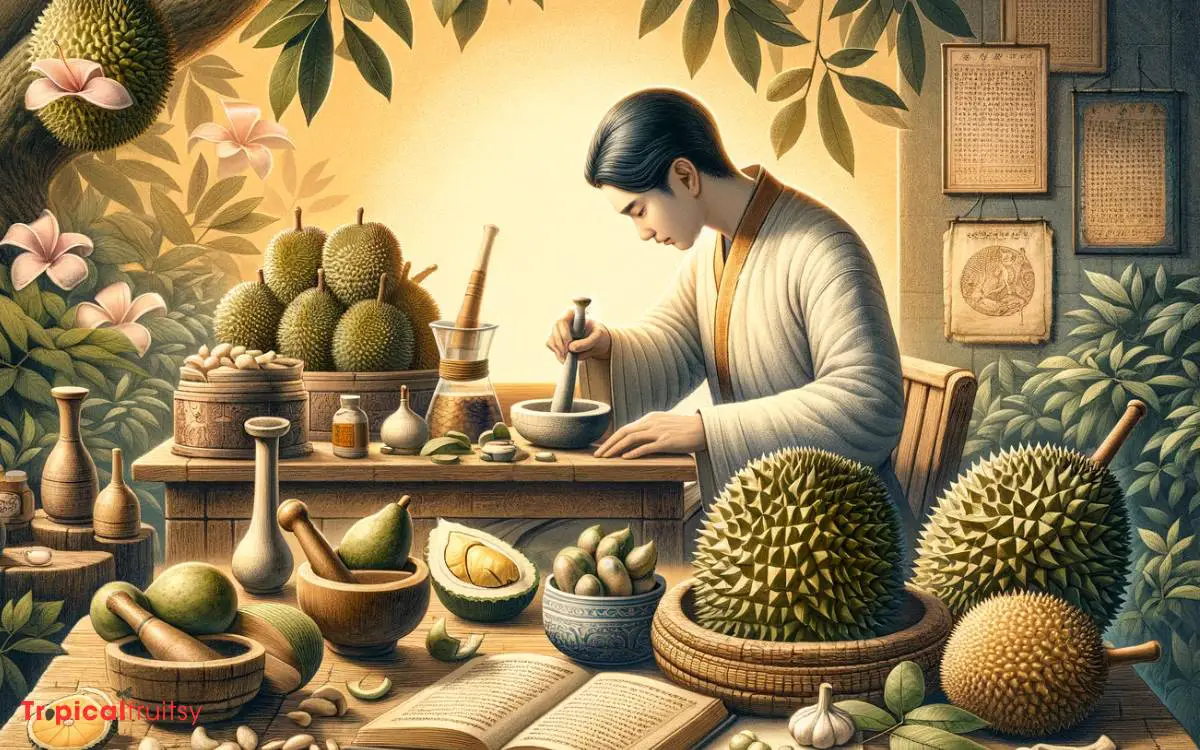
In traditional medicine practices, durian is employed for its alleged therapeutic properties, which include antipyretic and antimicrobial effects. The fruit’s pulp and rind are utilized in various folk remedies across Southeast Asia.
Scientific evaluation of durian’s medicinal application reveals a complex phytochemical profile, rich in compounds such as organosulfur and flavonoids, which are posited to contribute to its health benefits.
These bioactive constituents are thought to modulate biological pathways associated with febrile conditions and inhibit the proliferation of pathogenic microorganisms.
Durian’s utilization in traditional medicine is not merely anecdotal; ongoing research is elucidating the molecular mechanisms underpinning its purported efficacy.
As such, this exotic fruit’s role in ethnomedicine warrants further empirical investigation to substantiate or refute its historical claims.
Agricultural and Environmental Impact

Frequently, the cultivation of durian, beyond its dietary and medicinal applications, has significant implications for both agriculture and the environment.
As a high-value crop, durian can boost local economies, but it also presents several challenges:
- Monoculture Practices: Intensive durian farming can lead to a decrease in agricultural biodiversity, disrupting local ecosystems.
- Deforestation: To accommodate expanding durian orchards, forests are often cleared, resulting in habitat loss and reduced carbon sequestration.
- Resource Consumption: Durian trees require substantial amounts of water and nutrients, potentially straining local resources and impacting the sustainability of water sources.
These factors necessitate careful management to mitigate negative environmental impacts.
As we delve into the utilization of durian in beverages and liquors, the agricultural footprint remains a pertinent consideration.
Durian in Beverages and Liquors
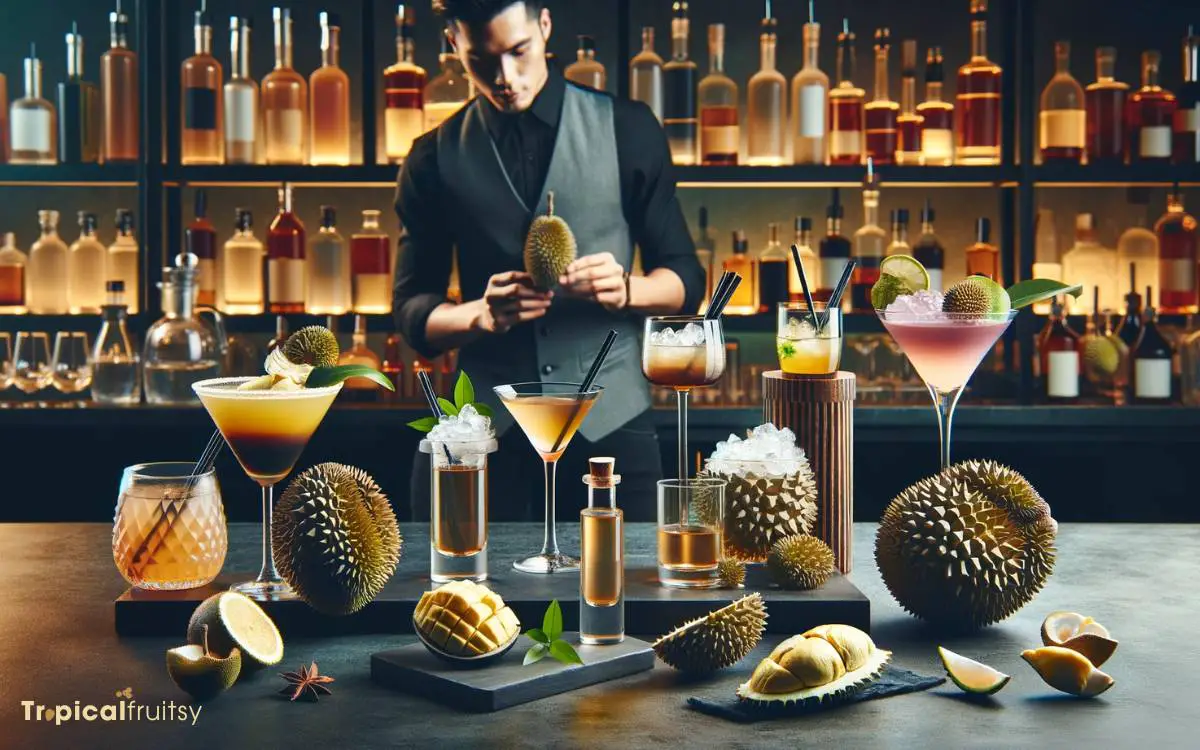
Beyond its role in agriculture and environmental considerations, durian fruit is also utilized in the creation of unique beverages and liquors, which are cherished for their distinctive flavors.
The incorporation of durian into these products is a testament to its versatility and the growing global curiosity in exotic tastes.
In beverage applications, durian is often blended into smoothies, milkshakes, and specialty coffees, providing a creamy texture and complex taste profile that balances sweetness with a subtle savory undertone.
The production of durian-based liquors involves fermentation and distillation processes that extract the fruit’s pungent aroma and rich flavor compounds.
These specialty spirits occupy a niche market, appealing particularly to connoisseurs seeking novel sensory experiences.
The technical challenges in processing durian for alcoholic beverages include managing the fruit’s high sulfur content to ensure a palatable end product.
Cultural Significance and Festivities

Durian’s cultural impact is profound, serving as a centerpiece for numerous festivals and social gatherings across Southeast Asia.
The fruit’s significance is deeply embedded in the fabric of various cultural traditions and communal rites where it often symbolizes wealth and prosperity due to its size, unique flavor, and relative rarity.
Analytically examining the fruit’s role in cultural festivities reveals:
- Durian festivals, which are events dedicated to the celebration and appreciation of durian, showcasing a wide variety of species and preparations.
- Social customs that involve gifting durians to convey respect or to foster relationships, underscoring the fruit’s status in social hierarchies.
- Agricultural fairs that feature durian as a premium product, highlighting the fruit’s economic importance to local communities and its role in supporting regional agrobusiness.
Each point illustrates the multifaceted cultural reverence for durian across Southeast Asia.
Conclusion
Durian demonstrates dynamic diversity in its applications, from culinary creativity to traditional therapeutic treatments.
This distinctive fruit delivers a plethora of nutritional benefits, contributes to cultural celebrations, and even extends its utility to the beauty industry.
Analytical assessment of durian’s multifaceted uses reveals its substantial significance in Southeast Asian societies and suggests potential for broader global influence, contingent on overcoming sensory prejudices associated with its pungent aroma.

